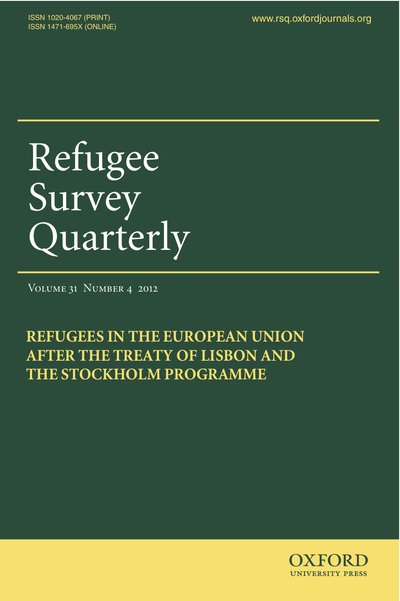1 Dec 2012
Journal Articles
Panizzon, Marion
Readmission Agreements of EU Member States: A Case for EU Subsidiarity or Dualism?

Article by Marion Panizzon in Refugee Survey Quarterly Table, Refugees in the European Union after the Treaty of Lisbon and the Stockholm Programme, Vol. 31, No. 4, December 2012, pp.101-133.
Abstract
This article examines the extent to which the Treaty of Lisbon’s new express European Union competence over readmissions under Article 79(3) may affirm the Union’s exclusivity over return policy. We first trace the trajectory of Union competences over readmissions from implicit to shared. We then provide a brief overview of European Union's readmission agreements discussing their scope and content in relation to human rights guarantees and the third-country nationals’ clause. Based on a case study of the French agreements on joint management of immigration flows and partnership development we test whether these agreements are better placed to deal with readmission of third-country nationals than those of the European Union despite a weak human rights record. We find that the French agreements on joint management of immigration flows and partnership development do not compare to European Union's readmission agreements, because of the broader issue linkages in particular between labour market access and readmission obligations. On that basis we find against a parallelism which might establish an exclusive Union competence over readmission. Yet, the Commission and Council argue that the conclusion of an European Union's readmission agreement stands proof, together with the European Union Returns Directive of the Union's occupying the field, so that Member States are precluded from bilateral action. Finally, European Union's mobility partnerships, which increasingly require the conclusion of an European Union's readmission agreement, may strengthen arguments in favour of exclusivity, based on the principles of parallelism and subsidiarity.
http://rsq.oxfordjournals.org/content/31/4/101.abstract.html?etoc

